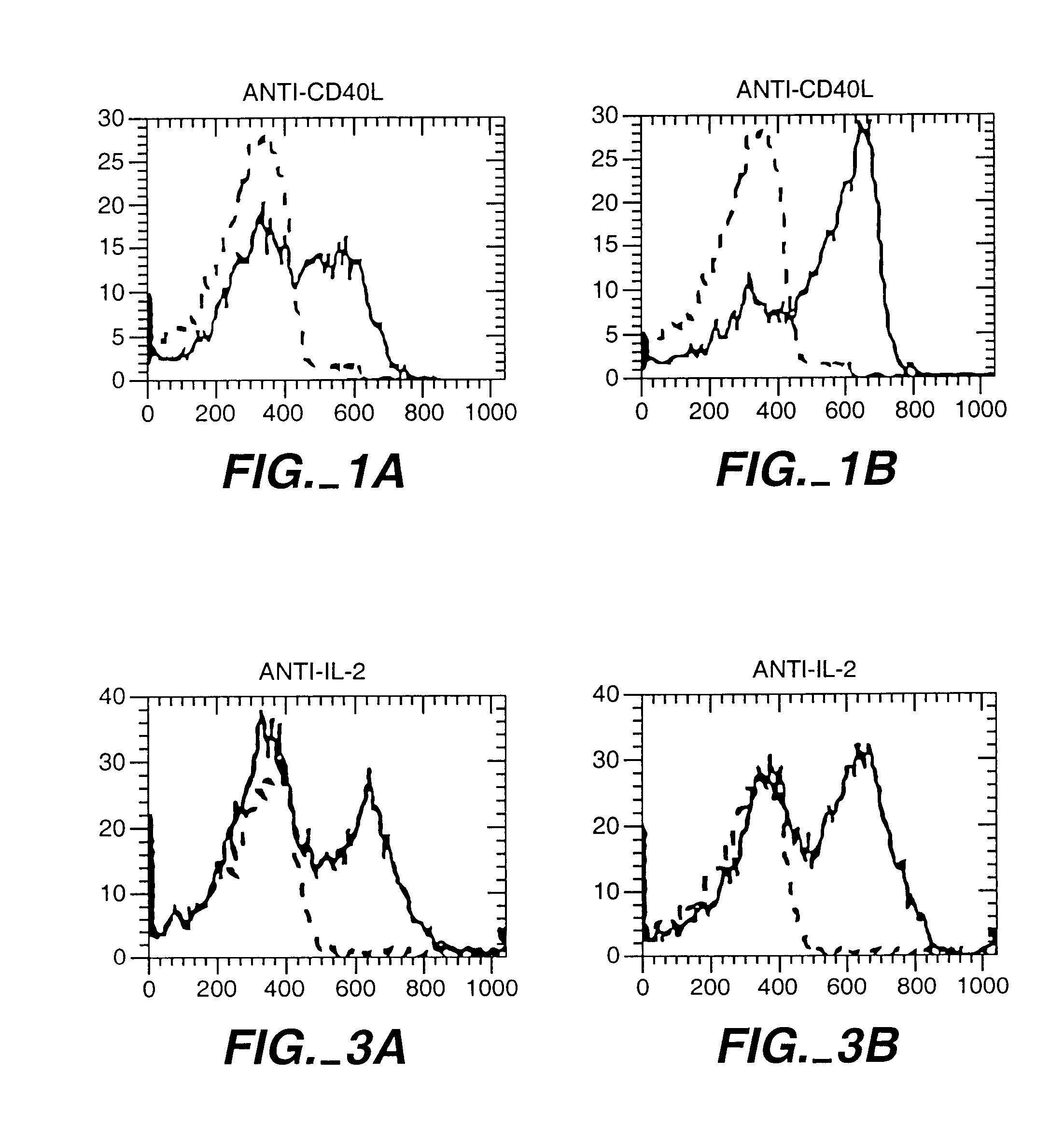Use of cytokines and mitogens to inhibit graft versus host disease
a technology of cytokines and mitogens, which is applied in the field of pharmaceutical agents, can solve the problems of high incidence of transplant-related complications, use of this procedure, and complicated transplantation of hematopoietic stem cells from unrelated (or allogeneic) donors, so as to block the ability of donor-derived lymphocytes, suppress gvhd, and avoid or minimize toxic immunosuppressive medicines
- Summary
- Abstract
- Description
- Claims
- Application Information
AI Technical Summary
Benefits of technology
Problems solved by technology
Method used
Image
Examples
example 1
Donor Lymphocyte ex vivo Treatment to Prevent an Immune Attack Against Blood Cells from an Unrelated Recipient
[0069]A blood sample from a donor was obtained and lymphocytes prepared by density gradient centrifugation. T cells were prepared using a conventional negative selection procedure. These T cells were conditioned to prevent them from attacking the recipient cells. For this conditioning, the CD8+ T cells were mixed with irradiated stimulator cells from the recipient. The stimulator cells were derived from T cell-depleted blood cells from the recipient. The mixture of donor T cells and recipient stimulator cells were cultured for 48 hours with different concentrations of one or more cytokines. In this example the cytokines were TGF-β and IL-10. This procedure abolished the potential of the donor T cells to kill recipient cells, in FIG. 4B.
[0070]To test the ability of the donor T cells to recognize and kill recipient blood cells, the donor T cells were cultured with irradiated s...
example 2
CD8+ T Cells from the Donor Conditioned ex vivo to Prevent other Donors T Cells from Mounting an Attack Against Blood Cells from an Unrelated Recipient
[0071]A blood sample from a donor was obtained and lymphocites prepared. CD8+ T cells were mixed with irradiated stimulator cells of the recipient and either TGF-β (picograms per ml) or IL-12 100 U / ml. IL-12 is known to enhance the ability of CD8+ T cells to develop the capacity to kill. Here IL-12 was used to show that a given population of CD8+ cells can be induced to kill or to block killing depending upon how they are activated. Other CD8+ cells were cultured in culture medium only as a control (CD8 med).
[0072]The CD8+ T cells, the stimulator cells and the cytokines were cultured for 48 hours and the cytokines were removed from the cultures by washing. This procedure not only abolished the potential of the TGF-β conditioned CD8+ cells to kill the recipient cells, but also induced them to prevent other donor T cells from killing th...
example 3
Treating a Patient with Chronic Myelocytic Leukemia with the Stem Cells from a Histoincompatible Donor: Tolerization with Mitogens
[0074]The harvested PBMC of the donor are placed in a sterile container in HBBS as in Example 1. The cells are then incubated with mitogens to induce lymphocytes to become non-responsive to histocompatibility antigens of the recipient. In this case the cells are incubated with physiological concentrations of concanavalin A (Con A) for 4 to 72 hours using standard incubation techniques. The concentration of Con A used can range from about 0.01 to about 10 micrograms / ml with 1 microgram / ml being presently preferred. Alternatively, SEB may be used as the mitogen at concentrations of 0.001 to 100 ng / ml.
[0075]The incubation of the mononuclear cells in the mitogen solution increases the population of T suppressor cells. These cells, when transferred to the recipient, will enable the stem cells to engraft without causing GVHD. Although it is not known how the mi...
PUM
| Property | Measurement | Unit |
|---|---|---|
| concentration | aaaaa | aaaaa |
| time periods | aaaaa | aaaaa |
| concentrations | aaaaa | aaaaa |
Abstract
Description
Claims
Application Information
 Login to View More
Login to View More - R&D
- Intellectual Property
- Life Sciences
- Materials
- Tech Scout
- Unparalleled Data Quality
- Higher Quality Content
- 60% Fewer Hallucinations
Browse by: Latest US Patents, China's latest patents, Technical Efficacy Thesaurus, Application Domain, Technology Topic, Popular Technical Reports.
© 2025 PatSnap. All rights reserved.Legal|Privacy policy|Modern Slavery Act Transparency Statement|Sitemap|About US| Contact US: help@patsnap.com



